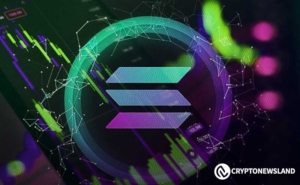Why should AI framework standards move towards "chainization"?
AI agents must trend towards "chainization" to make more reliable autonomous decisions and facilitate intercommunication and collaboration.
Author: Haotian
Many people still do not understand why I have been calling for AI framework standard projects to move towards "chainization." Perhaps during the previous two bull and bear markets, Chain infra carried too many expectations, and now that we have finally entered the AI Agent "application" era, there is a sense of dread towards "chain." However, for AI Agents to make more reliable autonomous decisions and collaborate with each other, they must inevitably trend towards "chainization."
Currently popular frameworks like ELIZA, ARC, and Swarms are basically still in the "concept stage." This stage cannot be falsified and return to zero, nor can it be verified and explode; it is essentially in a swaddling stage where valuation cannot be quantified. This is the first hurdle for issuing assets on GitHub; we need to find the feasibility for the outlined frameworks and visions to gain unanimous market recognition.
If we take a closer look at frameworks like ELIZA, ARC, and Swarms, whether optimizing the performance of a single AI Agent to the extreme or creating multi-AI Agent interaction and collaboration frameworks, they essentially need to establish a traceable logic and rules for AGI large model API calls.
After all, data is off-chain, the reasoning process is difficult to verify, the execution process is opaque, and the execution results are uncertain.
From a short-term perspective, TEE provides a low-cost, highly feasible off-chain trustless solution that can accelerate the integration of AGI applications into the autonomous decision-making process of AI Agents. From a longer-term perspective, a set of "on-chain consensus" is also needed to assist in making it more reliable.
For example, if ELIZA wants to build an AI Agent autonomous private key custody solution based on its framework, it uses @PhalaNetwork's TEE secure remote authentication capability to ensure that the execution code of the AI-Pool is not tampered with before calling the private key for signing. However, this is just the first small step of TEE's application in the direction of AI Agents.
If we can place complex preset execution logic into the Agent Contract and have the Validators of the Phala chain participate in the verification, a chain of execution details based on consensus constraints of TEE will be established. At that time, the demand for TEE driven by AI Agents and the positive flywheel of chain empowerment driven by TEE will start to operate.
The logic makes sense; TEE can ensure that private keys are not visible, but how the private keys are called, based on what preset rules, how risk control emergency responses are triggered, etc. can be implemented in the short term through open-source code repositories for transparency. However, looking further ahead, wouldn't it all rely on a decentralized verification consensus for real-time validation?
Therefore, "chainization" can accelerate the AI Agent framework towards practical application and also bring new incremental opportunities alongside Crypto infra.
The direction is already very clear. For most people, finding and being bullish on the earliest chainized AI Agent frameworks and the oldest chains supporting AI Agents is the Alpha under the new trend of AI Agents.
Disclaimer: The content of this article solely reflects the author's opinion and does not represent the platform in any capacity. This article is not intended to serve as a reference for making investment decisions.
You may also like
US equities slide as trade war escalates, Powell signals no rate cut
Tariff and interest rate concerns overshadowed a positive March jobs report
Sei Investments increases 39% stake in MicroStrategy

Fidelity Spot Solana ETF Gains Traction As SEC Acknowledges Filing

Paul Atkins Moves Closer to SEC Chair Role After Senate Committee Approval

